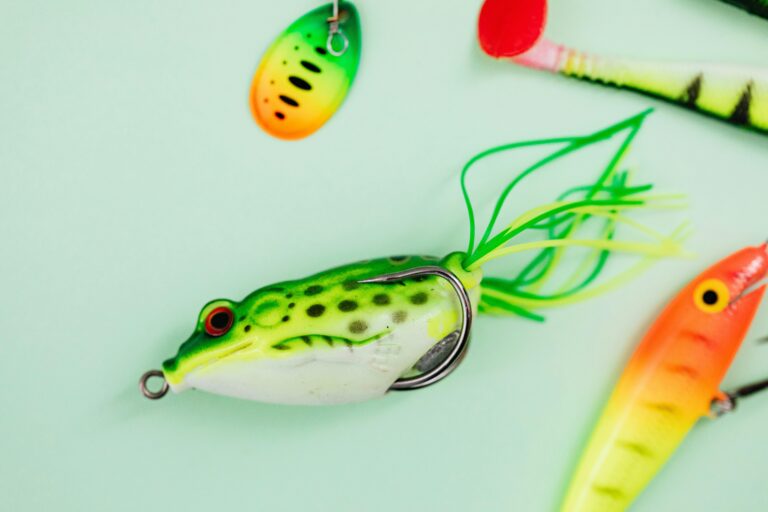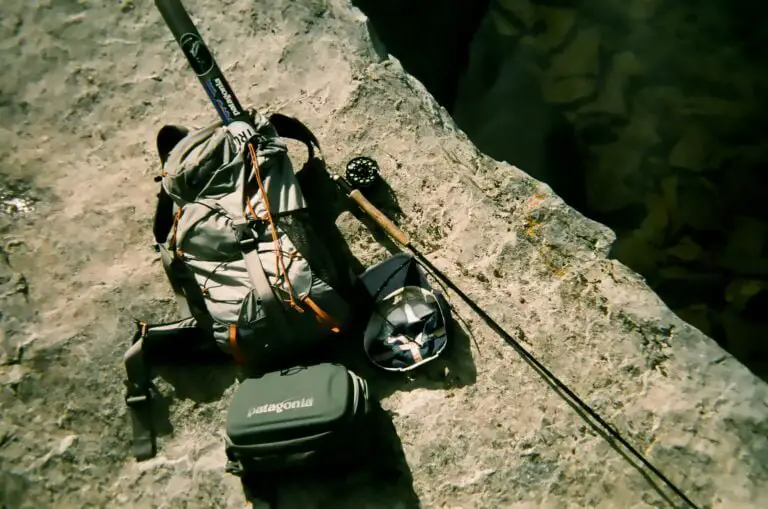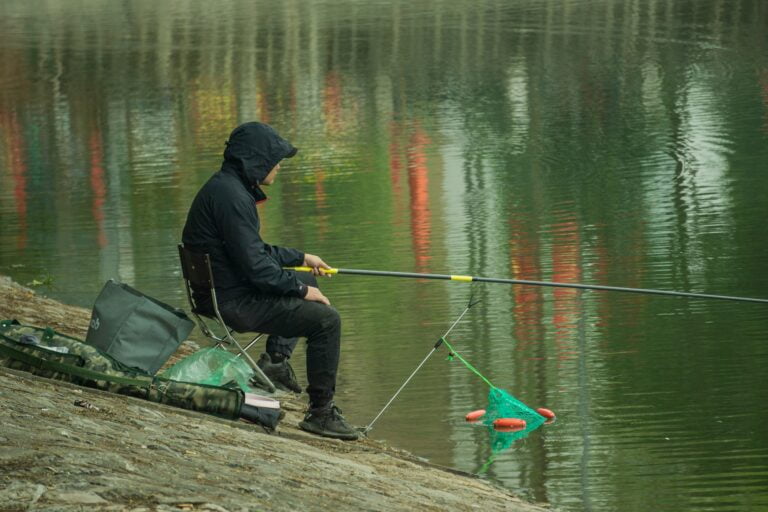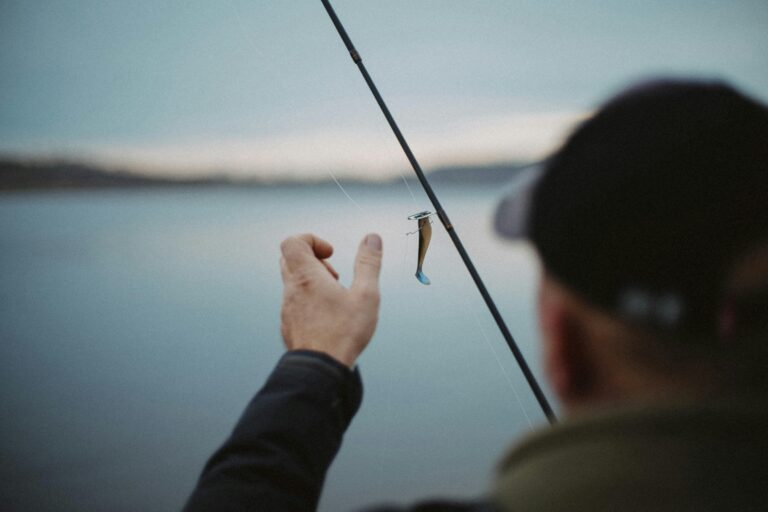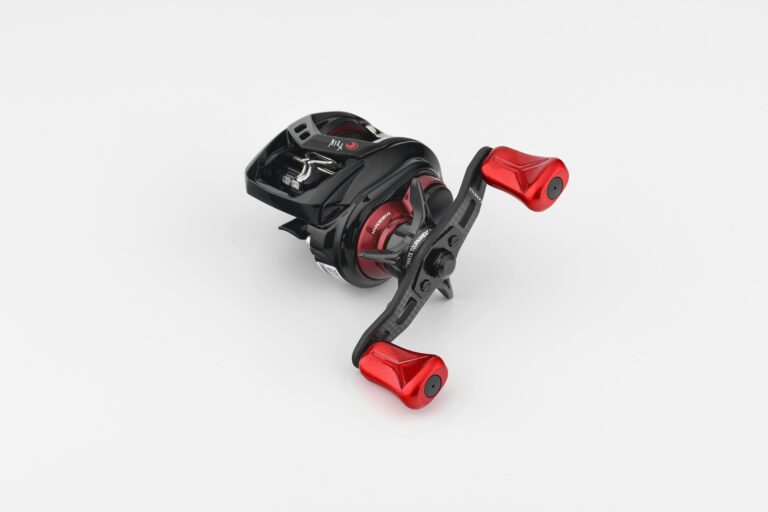What To Use For SmallMouth Bass Ultimate Guide 2024
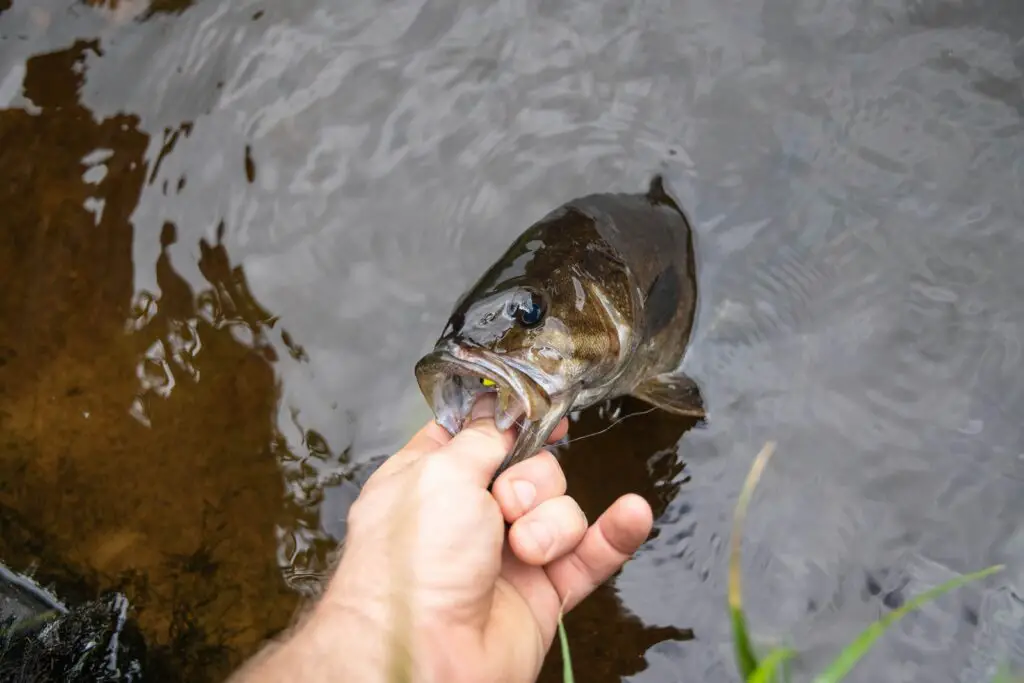
knee-deep in a crystal-clear river, the morning mist swirling across the earth as the sun begins its rise. With each flick of your wrist, you precisely stabilize your line, increasing the suspense.
There can be a sudden, strong pull that sends adrenaline shooting through your veins. With your heart pounding, you pull in, and there it is a smallmouth bass, gleaming in the early light like polished bronze.
The allure of smallmouth bass fishing lies in its ability to blend skill, strategy, and a profound admiration for the natural world. We are able to go into the crucial tools and methods in this last booklet to help you achieve success in the international smallmouth bass fishing community.
Thus, take a picture of your rod, your address box, and permissions, and set off on an adventure filled with exhilarating experiences, terrifying encounters, and life-changing occurrences.
What To Use For SmallMouth bass 2024
When focused on smallmouth bass in 2024, you’ve got numerous powerful entice options. Here are a few top picks:
Soft plastic baits
Keitech FAT Swing Impact: This soft plastic swimbait has a ribbed frame design that vibrates naturally within the water. Its boot-fashion tail gives an enticing kick at any pace. You can rig it weedless, Texas-style, or on a jig head.
Storm Wildeye Shad: A price-range-pleasant alternative, this smooth plastic swimbait falls directly and swims properly. Its thin, tapering tail thumps correctly at all speeds, and it even works nicely via dense underwater vegetation.
jigs
Strike King Tour Grade Football Jig: Designed with a lead-weighted head, this jig wobbles and rocks at some stage in the fall. It keeps balance and hook-up orientation when worked at the bottom.
Other Effective Lures
Blade Baits
Jerkbaits
Crankbaits
Swimbaits
Topwater Lures
Remember to modify your method based totally on the unique water situations and the conduct of smallmouth bass in your vicinity. Tight traces!
Understanding Smallmouth Bass
Smallmouth bass, scientifically known as Micropterus dolomieu, are prized gamefish in North America. Renowned for his or her aggressive nature and acrobatic combat fashion, smallmouth bass are a favorite among anglers trying to find exhilarating freshwater fishing reports.
Habitat
Smallmouth bass are commonly placed in easy, cool waters that comprise streams, rivers, and lakes. They determine rocky bottoms, submerged structures like boulders and logs, and areas with moderate to rapid currents.
Smallmouth bass are also said to inhabit deeper swimming pools and rocky shoals, in particular during the hot summer months while water temperatures push upward.
Behavior
Unlike their largemouth cousins, smallmouth bass have a tendency to be more nomadic and much less territorial. They roam their habitat searching for prey, frequently patrolling rocky shorelines, drop-offs, and weed beds. Smallmouth bass are opportunistic feeders, preying on pretty much any aquatic insects, crayfish, small fish, or maybe frogs.
Feeding Patterns
Smallmouth bass are voracious predators with loads of eating regimens. They rely carefully on sight and vibration to find out their prey, making them especially aware of lures and baits that mimic natural meal belongings.
During dawn and nightfall, smallmouth bass are fantastically active, prowling the shallows and looking aggressive. However, they can also be caught during the day, mainly in deeper water or when situations are favorable.
Why They’re Sought After
Anglers are drawn to smallmouth bass for several reasons. First and foremost, there is the fun of the chase. Smallmouth bass are regarded for their explosive movements and spirited fights, offering an adrenaline-pumping revel in for even the most pro angler.
Additionally, smallmouth bass are prized for their delectable flesh, making them a famous target for lure-and-launch, similarly.
Unique Challenges
Despite their competitive nature, smallmouth bass can be notoriously selective at times, requiring anglers to conform their techniques and presentation to trap a bite.
Their preference for rocky habitats and fast currents additionally poses worrying conditions, as navigating these environments may be complicated for anglers.
Furthermore, smallmouth bass are sensitive to modifications in water temperature and clarity, requiring anglers to be attuned to environmental conditions for the most effective success.
In the arena of freshwater angling, few reviews rival the fun of hooking right into a feisty smallmouth bass. Understanding their habitat, conduct, and feeding patterns is vital for unlocking achievement on the water and maximizing your entertainment from this exhilarating pursuit.
Rods and Reels
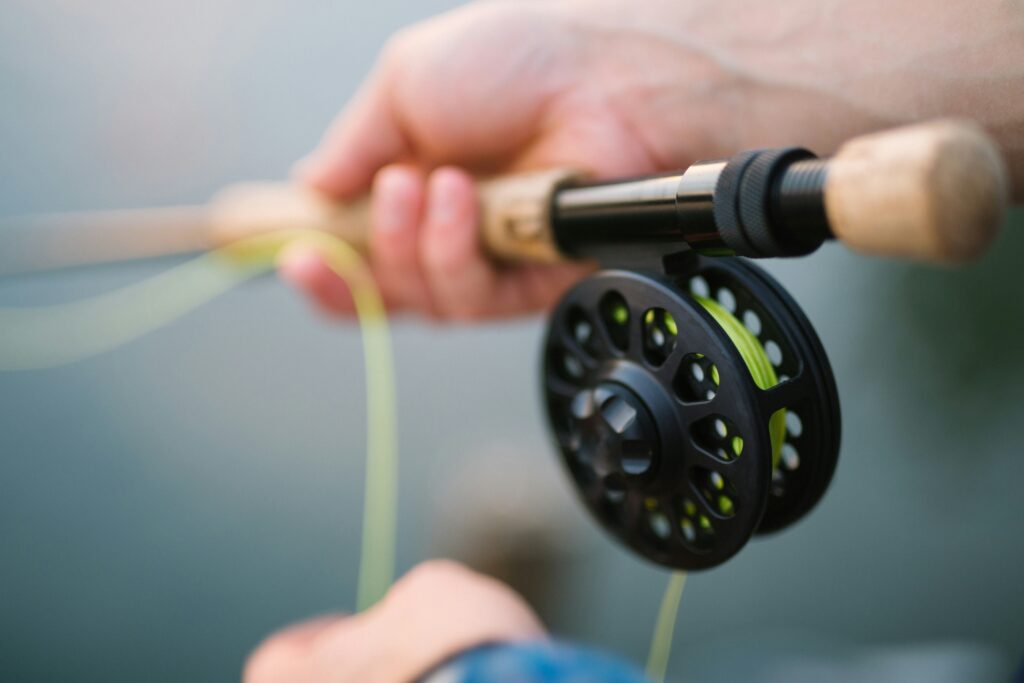
Selecting the right rod and reel aggregate is paramount for smallmouth bass fishing success. The right machine, which is not the handiest, complements your functionality to be sturdy efficiently, but it additionally ensures you can successfully battle the energetic fish as quickly as hooked.
Importance of Selecting the Right Rod and Reel
Choosing the proper fantastic rod and reel for smallmouth bass fishing is vital for several reasons. Firstly, the right setup permits for unique casting and presentation of lures or baits in the regions in which smallmouth bass are likely to be lurking.
Secondly, a properly-matched rod and reel provide the strength and management needed to manage the sturdy runs and acrobatic leaps characteristic of smallmouth bass, even when hooked.
Lastly, the consolation and ergonomics of your rod and reel setup can substantially have an effect on your fishing enjoyment, particularly in a few unspecified times within the future of lengthy days at the water.
Ideal Rod Length, Action, and Power:
For smallmouth bass, a truly tremendous rod duration normally falls within the range of 6 to 7 feet. This duration presents the energy wanted for several casting techniques while also imparting the leverage required to struggle with feisty bass.
When it includes rod motion, a medium-rapid to speedy motion is desired for smallmouth bass fishing. This lets in quick, correct casts and offers the sensitivity crucial to coming across subtle moves, mainly at the same time as fishing with synthetic lures.
In terms of power, a medium- to heavy-weight rod is normally advocated for smallmouth bass. This gives the spine needed to control and subdue the hard-preventing fish at the same time, no matter the truth that it takes enough sensitivity to revel in the slightest nibbles.
Comparison of Reel Types:
1. Spinning Reels Spinning reels are well-known among smallmouth bass anglers for their ease of use, versatility, and functionality to preserve strong, mild-weight lures with precision.
They are brilliant for finesse strategies, which include drop-shotting, wacky rigging, and slight jigging. When choosing a spinning reel for smallmouth bass fishing, look for a version with an easy drag device, superb bearings, and a lightweight but long-lasting introduction.
2. Baitcasting Reels Baitcasting reels offer advanced casting distance and accuracy, making them properly applicable for concentrated smallmouth bass in heavy cowls or at the same time as casting big lures.
They excel in applications involving the components of flipping, pitching, and casting crankbaits or spinnerbaits. When deciding on a baitcasting reel, select one with a dependable braking device, a cushty takeout, and a robust production to withstand the rigors of smallmouth bass fishing.
Recommended Options
Spinning Reel: Daiwa BG, Penn Battle II
Baitcasting Reel: Abu Garcia Revo SX, Shimano Curado DC, Daiwa Tatula SV
Ultimately, the selection among spinning and baitcasting reels comes right down to personal preference and fishing style.
Experiment with one-of-a-kind setups to find the combination that fits your goals and selections, and ensure that they suit your rod and reel effectively for remarkable normal, commonplace, and ordinary performance at the water.
Fishing Line
Fishing line is an essential problem in smallmouth bass angling because, in truth, it is the direct link between anglers and fish. The shape of the fishing line you select can considerably have an impact on your fulfillment on the water, as specific strains provide precise homes for specific fishing conditions and strategies.
Role of the Fishing Line in Smallmouth Bass Angling
The fishing line performs numerous crucial roles in smallmouth bass angling. Firstly, it serves as the connection between the angler’s rod and reel and the lure or bait being furnished to the fish.
This direct link we may additionally need to anglers, because it must solidify their offerings to purpose areas and revel in even the subtlest bites. Additionally, the fishing line acts as the lifeline within the direction of the combat, absorbing the marvel of the bass’s powerful runs and jumps at the same time as presenting the vital electricity to land the fish.
Comparison of Different Types of Fishing Line
1. Monofilament Line
Advantages
Monofilament line is fee-powerful and without troubles, making it a well-known choice for anglers of all degrees.
It has real stretch and wonder-absorption houses, which can be beneficial at the same time as preventing tough-combating fish like smallmouth bass.
Monofilament line floats, making it suitable for topwater shows and techniques.
Disadvantages
Monofilament line is prone to stretching through the years, which could decrease sensitivity and affect hook-putting ability.
It has better visibility underwater in comparison to fluorocarbon lines, which can probably, on occasion, result in spooking careful fish.
2. Fluorocarbon Line
Advantages
Fluorocarbon line is invisible underwater, making it ideal for easy water conditions and finicky smallmouth bass.
It has low stretch and immoderate sensitivity, allowing anglers to enjoy even the slightest bites and discover diffused modifications inside the backside form.
Fluorocarbon line sinks, making it suitable for backside-bouncing strategies like drop-shotting and Carolina rigging.
Disadvantages
Fluorocarbon line has an inclination to be stiffer and more susceptible to reminiscence, in contrast to monofilament line, which can have an impact on casting distance and accuracy.
It is usually more expensive than monofilament lines, which can also deter rate-aware anglers.
3. Braided Line
Advantages
The braided line gives superior energy and abrasion resistance, making it nicely appropriate for fishing in heavy cowls and rocky environments where smallmouth bass often live.
It has a minimal stretch, imparting high-quality sensitivity and hook-setting strength.
Braided line has a smaller diameter relative to its breaking energy, allowing anglers to spool more line onto their reels and benefit from extra casting distances.
Disadvantages
A braided line is exceedingly visible underwater, which may be a disadvantage in smooth water conditions in which stealth is vital.
It can be at risk of wind knots and backlash on baitcasting reels if not well managed.
Recommendations for Line Strengths and Diameters:
For smallmouth bass fishing in open water or with moderate cover, use a 6- to 10-pound test monofilament or fluorocarbon line.
When centered on smallmouth bass in heavy cover or rocky areas, pick out a fifteen- to twenty-pound check braided line as a mainline, paired with a fluorocarbon chief of 8 to 12 kilos for stealth.
Adjust line diameter and power based totally on fishing situations, water clarity, and the size of the fish being focused.
By knowing the homes and tendencies of numerous varieties of fishing strains, anglers should make informed choices while also deciding on the right line for smallmouth bass angling.
Experimentation and revelry will, in the long run, guide you to the pleasant-first-rate line desire for your particular fishing conditions and alternatives.
Baits and lures
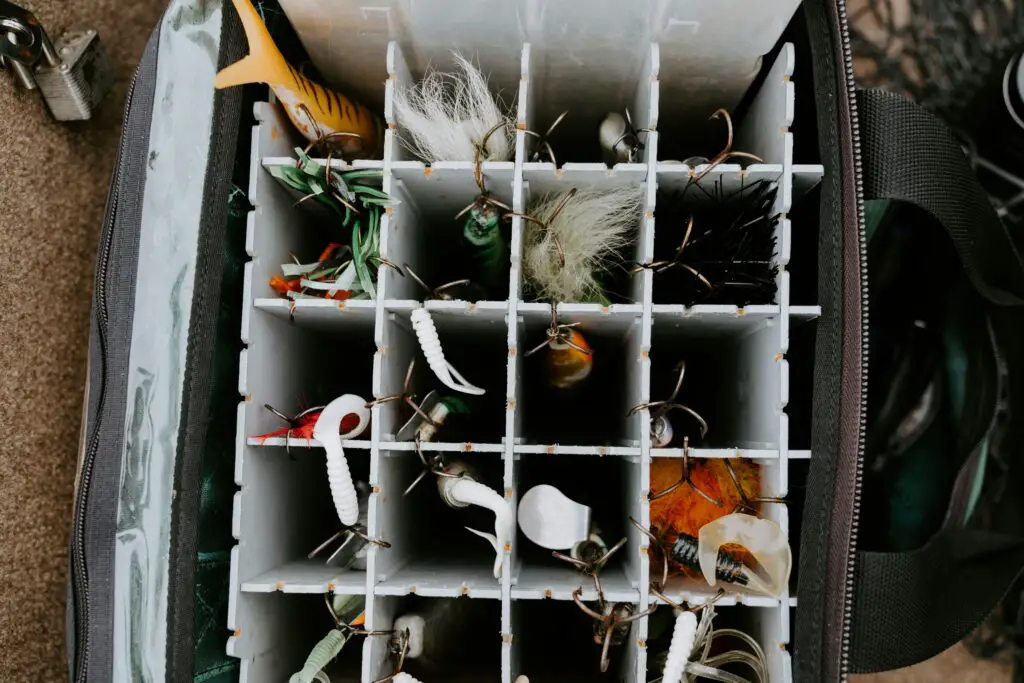
When it comes to appealing smallmouth bass, having the right choice of baits and lures for your deal with box could make all the difference between a hit day on the water and developing empty-exceeded.
Smallmouth bass are notorious for their competitive feeding behavior, and capitalizing on this voracious urge for meals calls for the strategic use of each herbal bait and artificial trap.
Most Effective Baits and Lures
1.Natural Baits
Live Bait Live bait, along with minnows, shiners, crayfish, and nightcrawlers, is impossible to face up to for hungry smallmouth bass. Present live bait with the usage of some techniques, collectively with float fishing, bottom rigging, and bobber fishing.
Worms: Nightcrawlers, crimson worms, and earthworms are conventional smallmouth bass baits that in no way fail to offer bites. Thread worms onto a hook using a Carolina rig or Texas rig for top-of-the-road presentation.
2. Artificial Lures
Crankbaits: Diving crankbaits in natural colorations mimic injured baitfish, making them powerful for triggering aggressive strikes from smallmouth bass. Experiment with particular diving depths and retrieve speeds to find an excellent presentation.
Jigs Jigs paired with slight plastic trailers are flexible lures that can be fished at numerous depths and are virtually one-of-a-kind cowl types. Swim jigs, soccer jigs, and finesse jigs are all powerful alternatives for attractive smallmouth bass.
Soft Plastics Soft plastic lures, together with tubes, creature baits, and stick baits, are enormously powerful for focused smallmouth bass in a whole lot of eventualities. Rig gentle plastics weedless or on jig heads and check with top-notch colors and sizes to form the forage.
Tips for Selecting the Right Bait or Lure
1. Water conditions
In smooth-water situations, smallmouth bass will be predisposed to be more wary and selective. Opt for herbal-searching baits and lures with diffused indications to keep away from spooking fish.
In stained or murky water, choose lures with contrasting colors and exaggerated moves to attract the attention of smallmouth bass.
2. Seasonal Considerations
During the spring months, at the same time as smallmouth bass are actively feeding in steerage for spawning, target shallow regions with lures that mimic baitfish or crayfish.
In the summer season, attention is paid to deeper water and rocky forms where smallmouth bass are looking for refuge from the warmth. Slow-transferring lures that incorporate jigs and smooth plastics are powerful for engaging sluggish bass.
In the fall, take advantage of feeding frenzies as smallmouth bass bulk up for the wintry months. Fast-shifting lures like crankbaits and spinnerbaits can cause competitive actions from hungry bass.
3. Smallmouth Bass Behavior
Pay attention to smallmouth bass behavior and regulate your bait or lure presentation ultimately. If fish are preserving tight to the cover or form, use lures that can be effectively labored through the areas without snagging.
Experiment with unique retrieval speeds, pauses, and jerks to mimic the erratic actions of injured baitfish or fleeing prey.
By understanding the alternatives for smallmouth bass and tailoring your bait and lure preference to the shape of the conditions, anglers can grow their opportunities for fulfillment on the water.
Whether you make a decision primarily based on the simplicity of natural baits or the ability of artificial lures, the key is to remain adaptable and inclined to adjust your approach based totally on the behavior of the fish.
Terminal Tackle
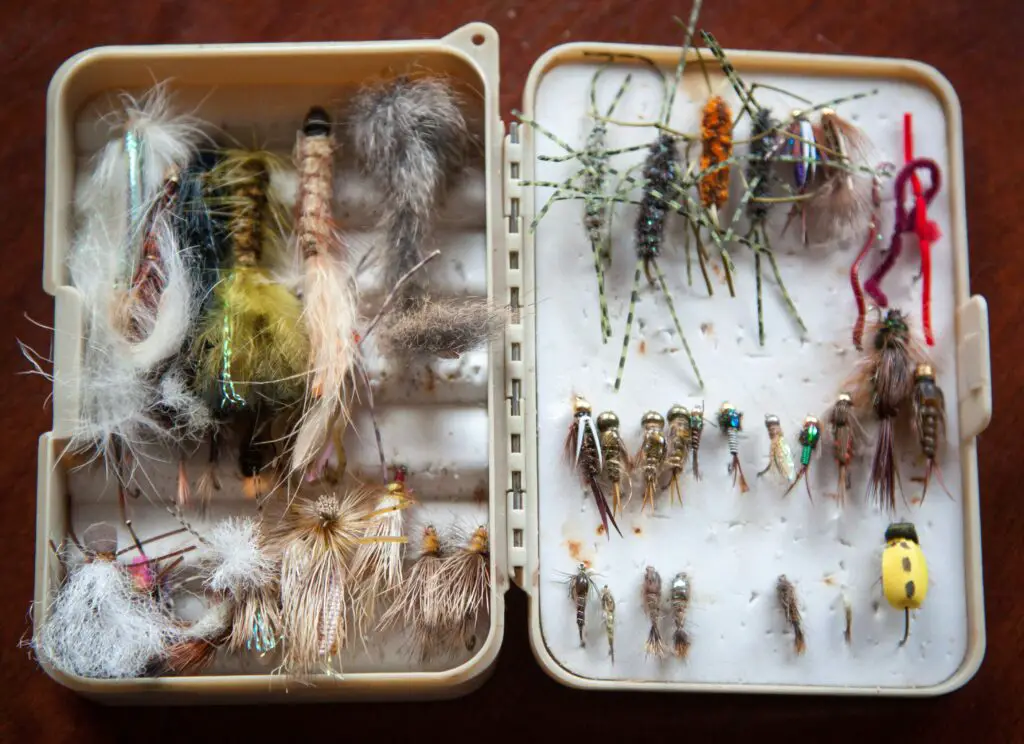
The terminal address plays a vital role in smallmouth bass fishing, serving as the final connection between your line and the bait or lure being offered. By deciding on the proper hooks, weights, and swivels, anglers can optimize their setups for maximum overall performance and effectiveness on the water.
Essential Terminal Tackle Items
1. Hooks
Size and Style: When targeting smallmouth bass, choose hooks in sizes starting from 2/0 to 3/0 for maximum programs. For finesse techniques or smaller baits, smaller hook sizes, which consist of 1/0 or even size 1, can be appropriate.
Styles inclusive of offset shank computer virus hooks, EWG (Extra Wide Gap) hooks, and octopus hooks are normally used for smallmouth bass fishing.
Weighted vs. Unweighted: Depending on the fishing situation, anglers can also select to use weighted hooks (e.g., jig heads) to help get their baits or lures properly down to the popular depth and velocity, mainly whilst fishing deeper water or in modern-day times.
2. Weights
Types: Common varieties of weights utilized in smallmouth bass fishing include bullet weights, drop shot weights, and ruin-up shot weights. Each type serves a specific motive, whether or not or no longer it is together with casting distance, retaining a desired intensity, or providing subtle weight changes.
Size and Shape: Choose weights primarily based on the intensity of the water being fished, the rate of modern-day fishing (if applicable), and the size of the bait or entice being used. Heavier weights may be important for deeper water or quicker currents, while lighter weights are appropriate for finesse.
3. Swivels
Purpose: Swivels are used to prevent line twist and tangling, in particular when fishing with lures or rigs that spin sooner or later during retrieval. They allow for easy rotation of the bait or entice without supplying a twist to the fishing line.
Size and strength Select swivels that shape the electricity of your mainline and leader cloth. Swivel sizes are normally determined by a numerical score, with big numbers indicating heavier-duty swivels are able to deal with big fish and more potent currents.
Recommendations for Hook Sizes and Styles
Offset shank computer virus hooks: 2/0 to 3/0 for maximum easy plastic displays.
EWG (Extra Wide Gap)
hooks: 2/0 to a few/0 for big, tender plastics or creature baits.
Octopus hooks: Size 1 to at least 1/0 for finesse displays or smaller baits, which include worms or minnows.
Importance of Using Appropriate Weights and Swivels
Maximizing Fishing Success: Using the proper weights and swivels can help anglers attain a pleasant presentation and hold and control their baits or lures. This, in turn, increases the probability of enticing movements from smallmouth bass and correctly hooking and touchdown fish.
Preventing line twists Swivels play a critical role in preventing line twists that could arise while fishing with spinning lures or techniques that involve regular motion. By incorporating swivels into your terminal address setup, you can restrict line twist and keep clean, uninterrupted retrieves.
Enhancing Bait or Lure Action: Properly weighted rigs and strategically located swivels can enhance the natural action of baits and lures, making them appear more lifelike and appealing to smallmouth bass. This may be particularly crucial while fishing in easy water or focusing on finicky fish, which might be careful of unnatural shows.
By paying attention to the data about terminal address desire and configuration, anglers can fantastic-music their setups to keep in mind the particular situations and choices of smallmouth bass, growing their possibilities of success on the water.
Accessories and Tools

In addition to rods, reels, baits, and terminal addresses, there are numerous accessories and gadgets that might considerably beautify the smallmouth bass fishing enjoy. From making sure consolation and usual performance to promoting safety and conservation, these gadgets play essential roles in maximizing entertainment and success on the water.
1. Fishing Pliers
Fishing pliers are a crucial device for placing off hooks, lowering strains, and dealing with fish very well. Look for pliers with blanketed line cutters, corrosion-resistant substances, and ergonomic grips for cushty use.
2. Scissors
Sharp scissors or line cutters are vital for in short and cleanly trimming extra line, decreasing thru difficult braided line, and snipping tags from knots. Keep a couple of scissors or line cutters pretty clearly available for clean get right of access to, while preferred.
3. Tackle Boxes
Tackle packing containers are available in numerous sizes and configurations to address an in-depth shape of lures, hooks, weights, and unique terminals.
Organize your cope with containers strategically to make sure smooth get proper of entry to to the devices you need most customarily, and consider to apply separate bins for particular sorts of fishing (e.G., one for moderate plastics, each one-of-a-kind for tough baits).
4. Polarized Sunglasses
Polarized sun sun shades are profitable for lowering glare at the water’s ground and improving visibility under the floor.
They permit anglers to peer form, cowl, or in all likelihood fish greater in fact, improving their functionality to discover and cause smallmouth bass.
5 Safety Gear
Safety structures, which encompass lifestyle jackets or private flotation devices (PFDs), are critical for ensuring the safety of anglers, mainly even as fishing from boats or in brief currents.
Always be placed on a nicely located PFD, in spite of the fact that fishing in in all likelihood unstable conditions, and encourage others to do the same.
6. Proper Handling Techniques for Catch-and-Release Fishing
Catch-and-launch fishing is a conservation-minded method that shall we us anglers experience the leisure of catching fish at the same time as minimizing their impact on fish populations.
Proper manage strategies, together with wetting palms in advance whilst dealing with fish, the usage of barbless hooks to facilitate clean hook removal, and supporting the fish well at the equal time as liberating it, are crucial for making sure the fitness and survival of released fish.
7. Environmental Considerations
Be privy to your environment and workout the Leave No Trace requirements at the equal time as fishing. Pack out all trash and muddle, cast off fishing line and specific waste, and recognize flora, fauna, and natural habitats.
By minimizing your effect on the surroundings, you can help preserve the splendor and integrity of the places wherein smallmouth bass thrive.
In the stop, having the right accessories and devices can beautify the smallmouth bass fishing revel in with the useful aid of selling consolation, protection, and conservation.
From pliers and scissors to containers and polarized sun solar sunglasses, those gadgets are important partners for anglers looking to maximize their enjoyment and fulfillment at the water at the identical time as minimizing their effect on their environment.
Tips for Success
Fishing for smallmouth bass may be both exhilarating and tough; however, with the proper knowledge and techniques, you can greatly increase your possibilities of achievement on the water.
Here are a few practical hints and strategies that will help you liberate the secrets, techniques, and strategies of smallmouth bass fishing:
1. Read the Water
Smallmouth bass are frequently located near forms and cowls, including rocks, logs, and weed beds. Learn to be privy to those features and target areas where smallmouth bass may congregate.
Look for modern breaks, eddies, and seams in which smallmouth bass can preserve strength even while waiting to ambush prey. These regions regularly offer high feeding possibilities.
2. Understand seasonal patterns
Smallmouth bass behavior varies at some stage in the 12 months, so it’s vital to recognize seasonal patterns and regulate your strategies as a result.
In the spring, focus on shallow regions with warming water temperatures where smallmouth bass pass to spawn. Look for rocky seashores, gravel beds, and sandy bottoms where bass assemble their nests.
During the summer months, smallmouth bass are looking for cooler water temperatures and can retreat to deeper areas or shaded cover. Target deeper pools, rocky factors, and underwater structures where bass can find refuge from the warmth.
In the fall, smallmouth bass end up being more aggressive as they feed voraciously in guidance for the winter months. Take advantage of this feeding frenzy by focusing on rocky shores, submerged plants, and regions with baitfish concentrations.
3. Adjust Your Approach Based on Weather Conditions
Pay attention to climate patterns and regulate your fishing approach because of this. Overcast days and mild coffee conditions can increase smallmouth bass activity, and even a vibrant daytime may also push fish into deeper water or shaded cover.
Experiment with precise trap shows, retrieves, and depths to determine what smallmouth bass are responding to on any given day. Be prepared to conform your strategies as situations change throughout the day.
4. Practice Patience and Persistence
Smallmouth bass fishing may be difficult at times, requiring staying power and staying strength to benefit achievement. Don’t get discouraged by sluggish intervals or overlooked opportunities—preserve casting, experiment with unique techniques, and learn from every day trip.
Stay centered and observant, paying attention to diffused modifications in water conditions, fish behavior, and feeding styles. The more you understand the behavior and alternatives of smallmouth bass, the better prepared you’ll be to constantly seize them.
5. Respect the Environment
Finally, typically respect the environment and exercise responsible angling practices. Dispose of trash well, avoid traumatically sensitive habitats, and take care of fish with care to limit pressure and ensure their survival after launch.
Practice seize-and-release each time viable, in particular with massive or trophy-sized smallmouth bass, to help hold fish populations for future generations of anglers.
By following those tips and techniques, you can boom your opportunities for fulfillment while fishing for smallmouth bass, while also fostering a deeper appreciation for the beauty and complexity of the natural world.
Remember to technique every fishing ride with an open mind, a sense of journey, and a determination to conserve, and you’ll be well on your way to becoming a professional smallmouth bass angler.
Conclusion What To Use For SmallMouth bass
In this comprehensive manual for smallmouth bass fishing, we have included an extensive variety of topics to help you liberate achievement on the water.
From selecting the proper equipment and tackle to understanding smallmouth bass conduct and seasonal styles, we have got sensible tips and strategies to enhance your angling experience. Here’s a precis of the vital points covered:
Understanding Smallmouth Bass: Learn approximately the habitat, behavior, and feeding styles of smallmouth bass to better target those prized gamefish.
Selecting Gear and Tackle: Choose the right rods, reels, lines, baits, and lures for smallmouth bass fishing, deliberating factors that include water conditions, season, and fish conduct.
Terminal Tackle and Accessories: Ensure you’ve got critical items, consisting of hooks, weights, swivels, fishing pliers, scissors, tackle bins, and polarized sunglasses, to maximize your efficiency and safety on the water.
Tips for Success: Implement practical techniques including analyzing water, understanding seasonal patterns, adjusting your method based totally on weather conditions, and practicing endurance and persistence to boom your possibilities of success.
Respecting the Environment: Always exercise accountable angling practices, which encompass seize-and-release when appropriate, to maintain fish populations and their habitats for future generations.
It’s essential to emphasize the significance of the proper system and strategies for smallmouth bass fishing. By investing in a nice gadget, learning the nuances of smallmouth bass behavior, and honing your angling abilities, you may appreciably increase your possibilities of landing that trophy bass of a lifetime.
As you put your newfound records into practice, keep in mind to proportion your studies with those of others.
Whether it is swapping stories with fellow anglers, mentoring novices to the sport, or contributing to conservation efforts, sharing your ardor for smallmouth bass fishing can help encourage others and ensure the ongoing enjoyment of this thrilling pursuit for years yet to come.
So, seize your gear, hit the water, and embark on your personal smallmouth bass fishing adventure. With willpower, perseverance, and a deep appreciation for the environment, the fun of hooking right into a feisty smallmouth bass awaits.
We want to hear from you! Do you have your private smallmouth bass fishing pointers, tricks, or memorable reports to share? Leave a comment underneath and join the community.
Whether you’re a pro angler with years of experience or just starting out on your fishing journey, your insights and questions are valuable contributions to our community.
FAQs
What jig to use for smallmouth bass?
For smallmouth bass, a popular jig preference is the soccer jig. Its specific shape and layout make it powerful for bouncing along rocky bottoms, in which smallmouth bass often lurk. Additionally, remember the use of a jig with a crawfish or minnow imitation trailer to entice bites from these voracious predators.
Do smallmouth bass like crankbaits?
Yes, smallmouth bass are regarded to be interested in crankbaits, specially those who mimic the appearance and behavior of crayfish. Opt for smaller, compact, sensible crankbaits with noisy functions to trap bites from smallmouth bass, mainly as they conclude their spawn in mid-June when crayfish end up extra energetic.
Are spinnerbaits good for smallmouth bass?
Yes, spinnerbaits are excellent lures for targeting smallmouth bass, as evidenced by their continued popularity and endorsement by top anglers like Kevin VanDam. Their versatility and ability to attract big smallmouths make them a favorite choice among anglers
Is a 5000 reel too big for bass?
No, a 5000 spinning reel is not too huge for bass. In fact, it gives sufficient line capacity and drag power to deal with large bass, making it versatile for numerous bass fishing strategies, such as targeting largemouth bass which could grow up to 20 kilos.
How do I choose a rod and reel for bass fishing?
To select a rod and reel for bass fishing, don’t forget the fishing situations and target species. Spinning reels are suitable for mild traces and small lures in clear water or whilst targeting smaller fish. On the opposite hand, baitcasters provide more electricity for fighting larger bass. Match the reels with rods designed for bass, musky, walleye, or saltwater fish for most efficient performance.

